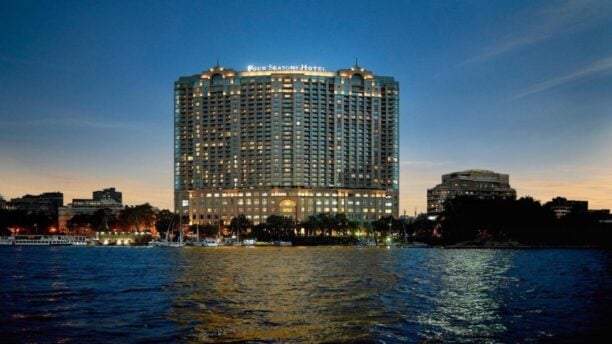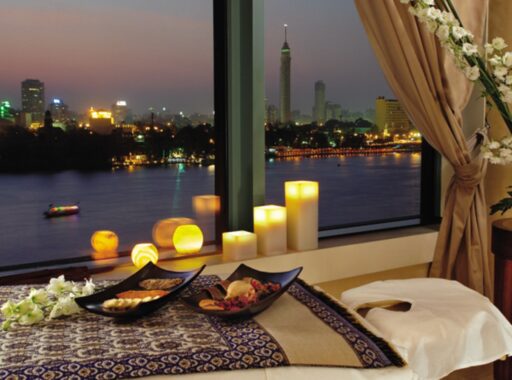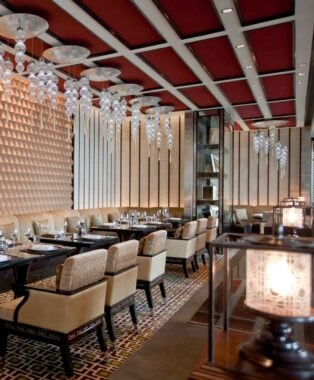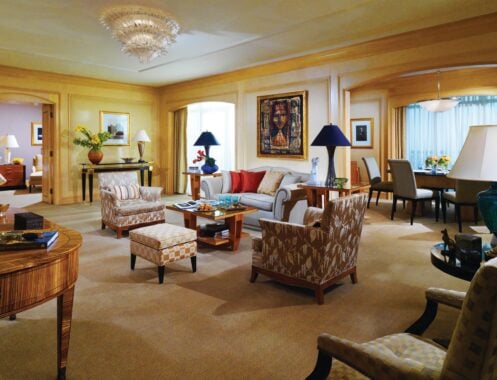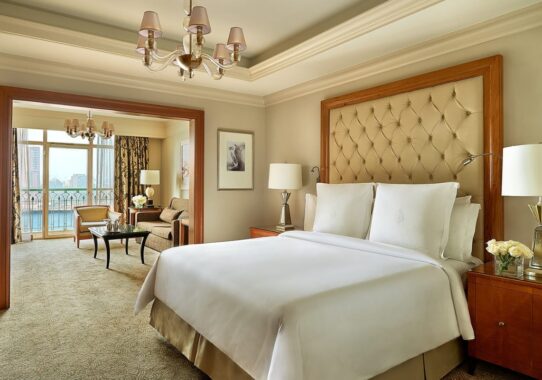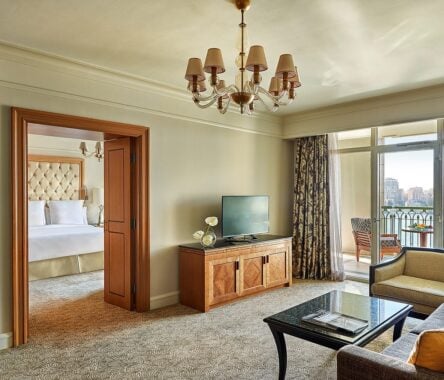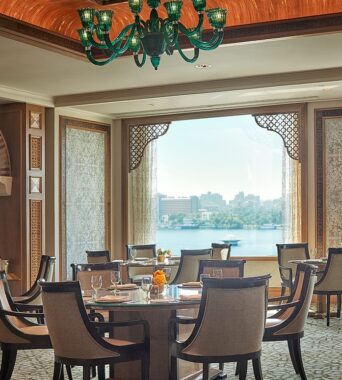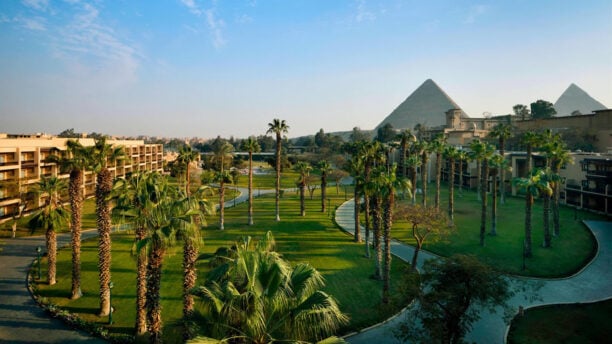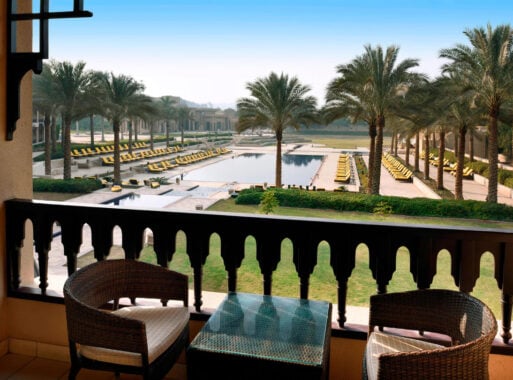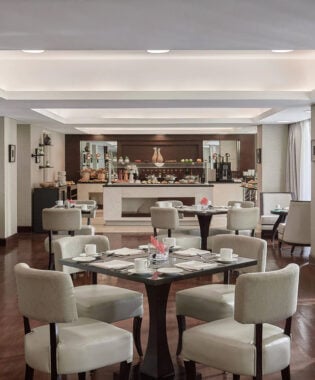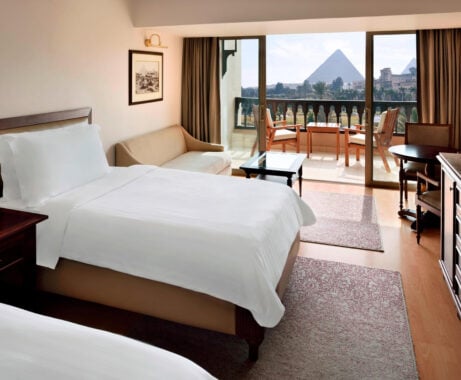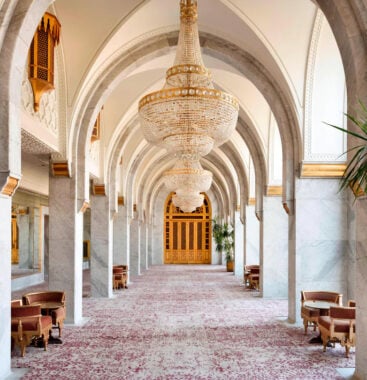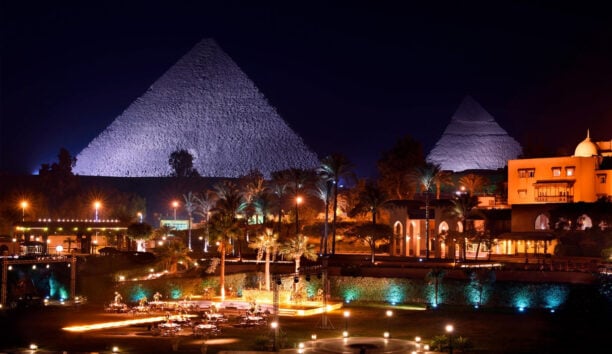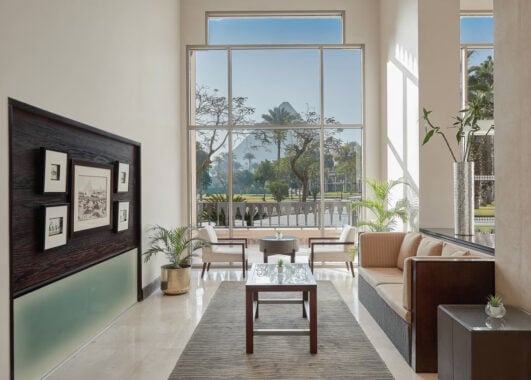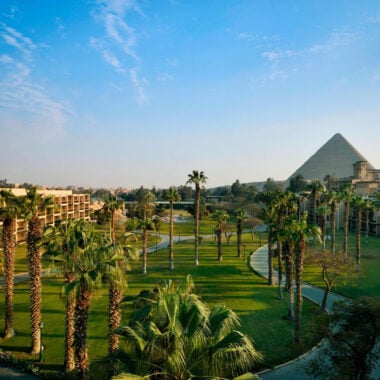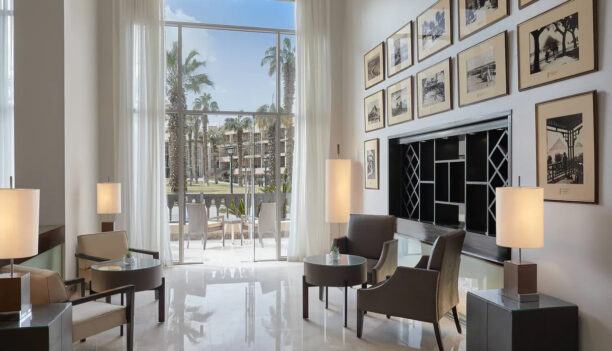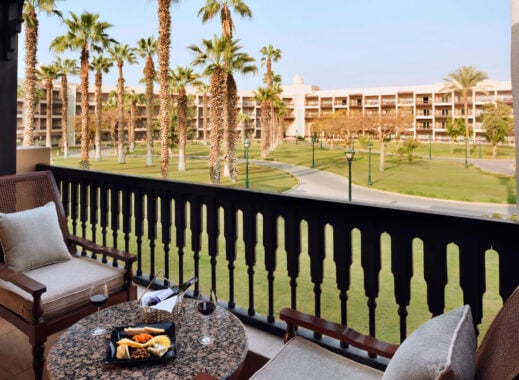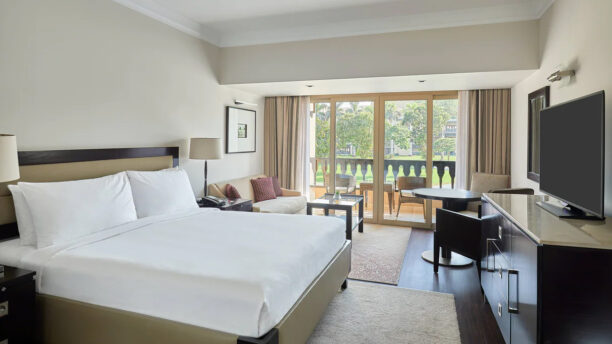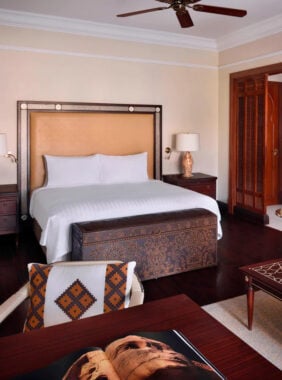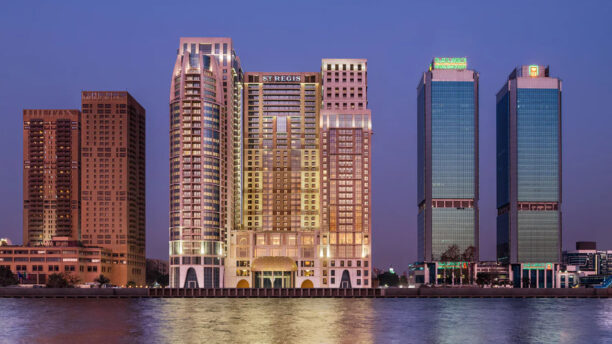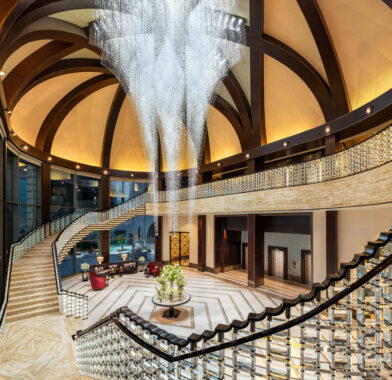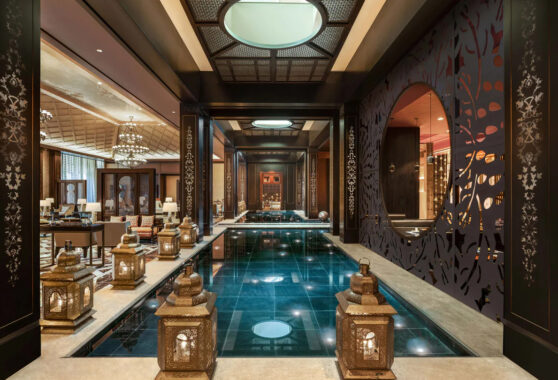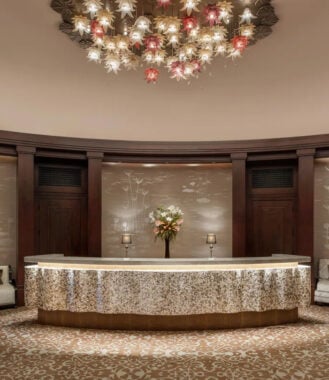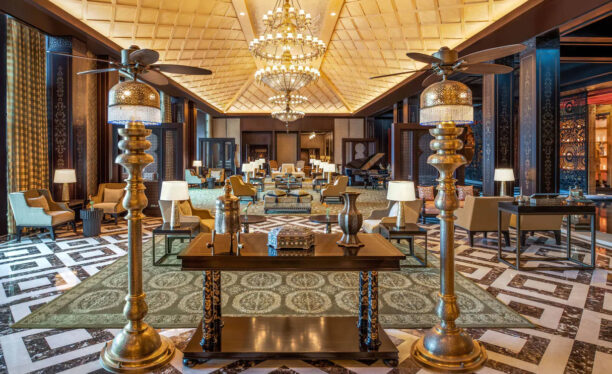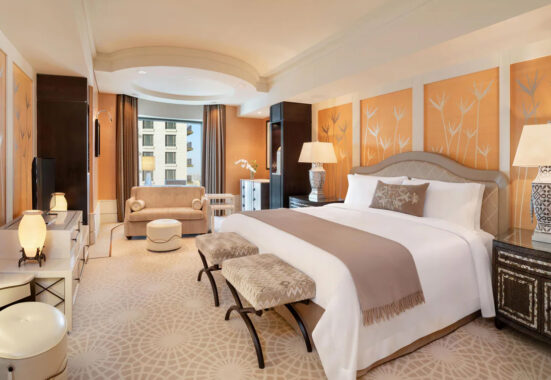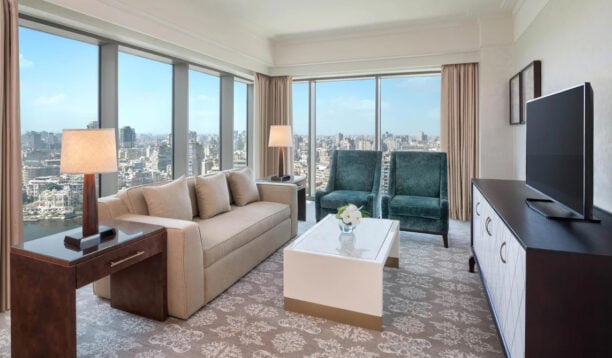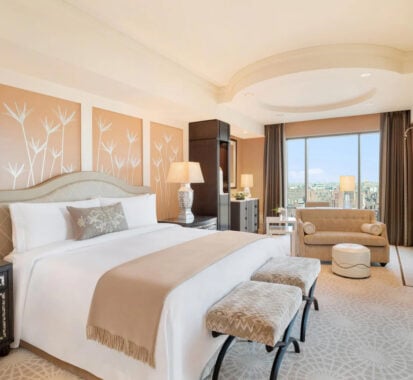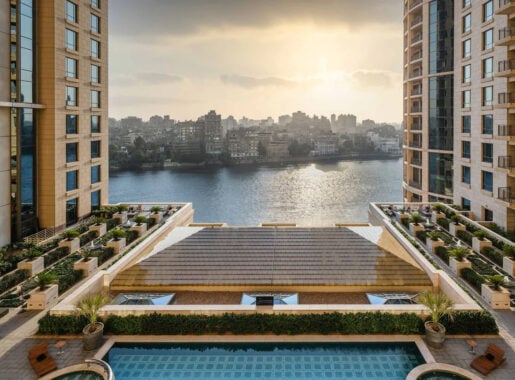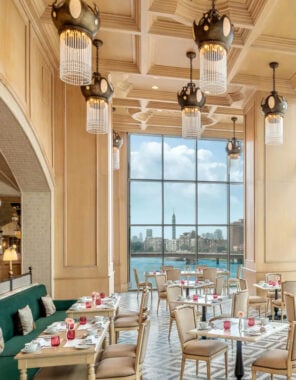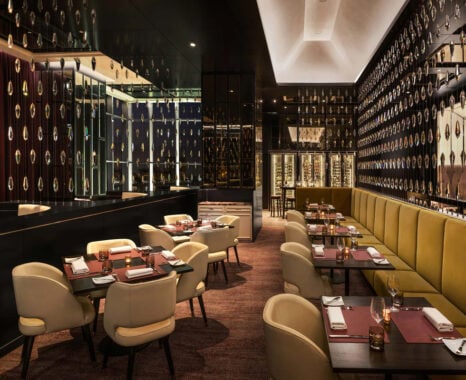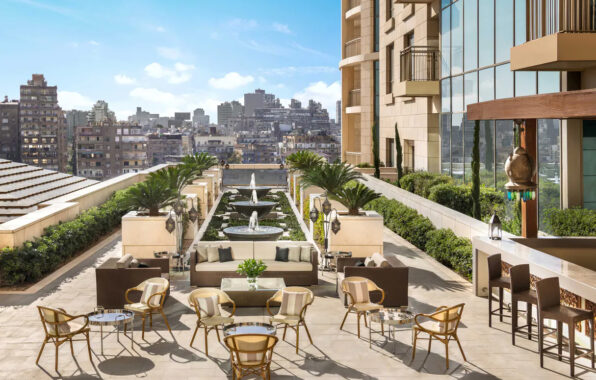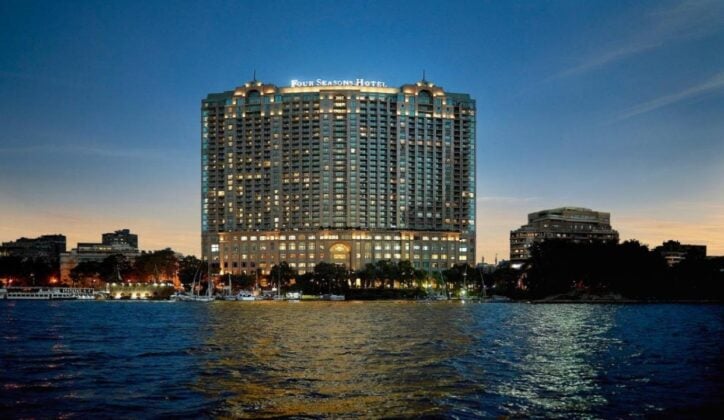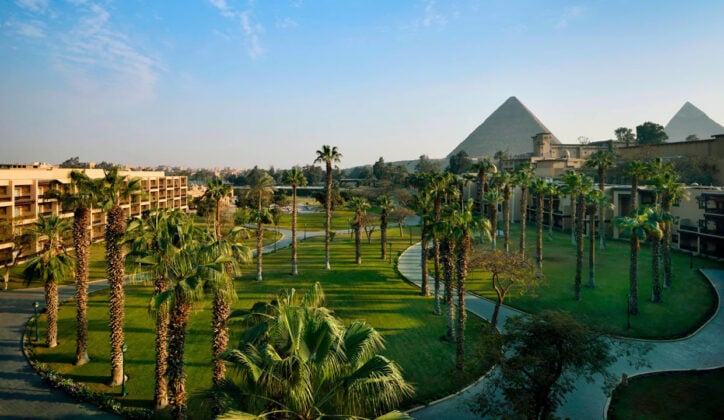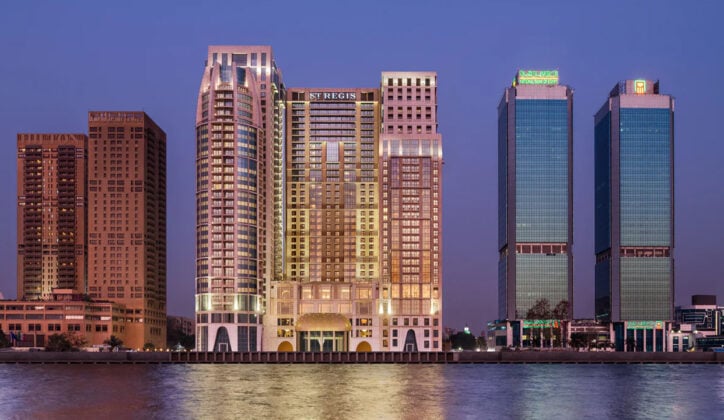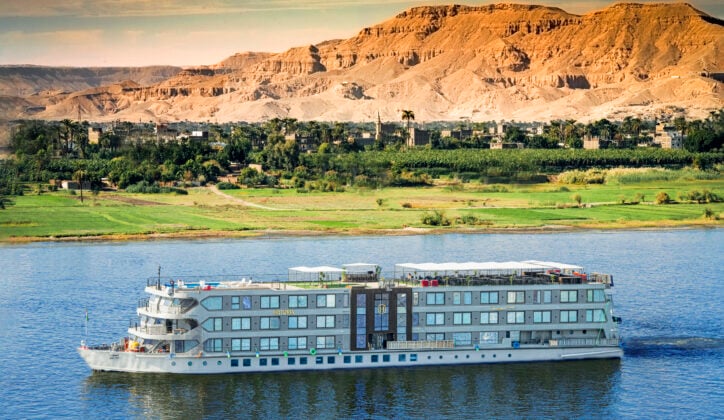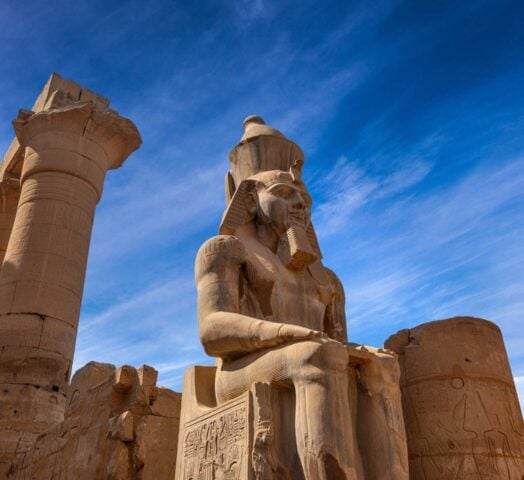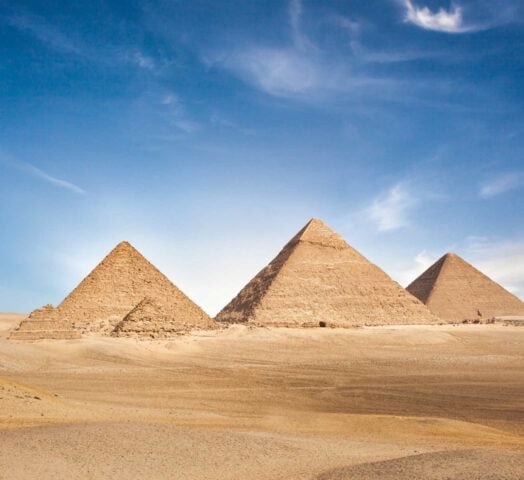Highlights of Egypt
Trip highlights
- Venture to a jazz club or belle-époque cafe in Cairo by night
- Admire the magnificent Giza Pyramids and learn about their construction
- Embark on a luxurious four-night Nile Cruise
- Marvel at the incredible craftsmanship of the glowing Luxor Temple in the evening
- Explore the mystical Valley of the Kings, once part of the necropolis of Thebes
- Come to understand the Nubian culture during an authentic, off-the-beaten track excursion in Aswan
Our bespoke trips include
We design one-of-a-kind journeys incorporating luxury in all its forms. Our bespoke trips include:
- Luxury accommodation throughout
- Privately guided tours
- Private transfers
- Meticulously selected experiences
- Expertise and support from your Jacada Concierge

- Days 1–4 Cairo
- Days 4–5 Nile cruise from Luxor
- Days 5–7 Nile cruise to Aswan
- Days 7–8 Aswan & Abu Simbel
- Days 1–4 Cairo
- Days 4–5 Nile cruise from Luxor
- Days 5–7 Nile cruise to Aswan
- Days 7–8 Aswan & Abu Simbel
Itinerary in detail
Every Jacada trip is tailored to your personal preferences and interests. Below you’ll find a sample itinerary to inspire your own custom-designed journey.
Three captivating nights in Cairo
Set on the banks of the Nile, Egypt’s capital Cairo is steeped in history. Its astonishing heritage sites and diverse neighbourhoods, both modern and traditional, enthrall. Known as the ‘city of a thousand minarets’ due to its concentration of Islamic architecture, Cairo is a vibrant multicultural hub. Your first excursion will be to the ancient pyramid site of Saqqara, where you’ll delve into the captivating history and evolution of these remarkable structures, and the awe-inspiring Great Pyramid of Giza, the last surviving wonder of the ancient world, accompanied by the majestic presence of the Great Sphinx.

Where you could stay
Cairo
Highlights
- 365 rooms
- Spa with 14 treatment rooms
- Jacuzzi, sauna and steam room
- Indoor heated pool
- 24-hour dining
- Outdoor pool
- Upper deck lounge
- Adults only
- 5 restaurants and 3 bars
Overview
Perched upon the banks of the timeless Nile River, the Four Seasons at Nile Plaza stands as a beacon of luxury and elegance, a testament to refined hospitality amidst the bustling cityscape. Inside, every modern convenience has been thoughtfully incorporated, seamlessly blending contemporary amenities with classic elegance.
The Four Seasons Nile Plaza offers a range of meticulously appointed accommodations, each thoughtfully designed to provide the utmost comfort and tranquillity. Whether you choose a spacious suite or a lavish guest room, you are treated to panoramic views of the river or the vibrant cityscape of Cairo, immersing you in the enchanting beauty of your surroundings.
Savour the art of gastronomy at the Four Seasons Nile Plaza’s unparalleled dining establishments. Indulge in a symphony of flavours at their Zitouni Restaurant, where world-class chefs craft exquisite Egyptian culinary masterpieces using the finest locally sourced ingredients. Immerse yourself in a captivating ambience as you sample Italian coastal cuisine at Riviera, or discover traditional Lebanese cuisine at Byblos.
On their rooftop, a cosy upper deck lounge invites guests to linger and share a handpicked selection of tapas and cocktails. After a hard day’s exploring, settle down at La Galerie and enjoy their daily entertainment ranging from piano, guitar, violin, bass and saxophone (on daily rotation).
→ Find out moreCairo
Highlights
- 331 rooms
- Outdoor pool
- Spa and gym
- Three restaurants
- Bar
- Walking distance from pyramids
Overview
If you’re looking for iconic views of the pyramids and beautifully-curated historic décor, then Mena House Cairo is a great option. Situated less than a kilometer from the ancient structures at Giza, the hotel boasts lovely gardens, a pool, and rich, traditionally Egyptian design elements. The walls of the historic property are lined with old photos of the surrounding area. Sections of the hotel have been reconstructed, to update and breathe new life into the rooms.
When it comes to exploring, the pyramids are within walking distance, and the hotel is also well placed for venturing into the city of Cairo itself. Return to Mena House after a day of discovering all the region has to offer and relax at the outdoor pool or book at treatment at the spa. The hotel’s three restaurants and bar will ensure you don’t go hungry. 139 Pavilion serves indoor and outdoor a la carte lunches and dinners accompanied by live music, as well as the main hotel buffet breakfast. You’ll find authentic Indian cuisine on the menu at the Moghul Room restaurant, and Italian favourites at Alfredo Italian Restaurant.
→ Find out moreCairo
Highlights
- 362 rooms and suites
- Seven restaurants and bars
- Gym and spa
- Indoor and outdoor pools
- Library
Overview
With outstanding views of Old Cairo and the Nile, St Regis Cairo offers you luxury and state-of-the-art facilities with a nod to the region’s local heritage. The riverfront hotel is an impressive landmark with 362 family rooms, suites and apartments spread across 36 stories, expertly designed by renowned architect Michael Graves. A stay here is all about personalised service.
St Regis Cairo also boasts an impressive seven carefully-curated restaurants and bars offering everything from Italian favourites and American classics, to Asian-inspired dishes to poolside Mediterranean dining. Menus are an exciting blend of culture and innovation and your dining experience is complemented by each restaurant’s signature décor and stunning views.
When you’re not out exploring, take time to unwind at Iridium Spa with a menu of treatments designed to offer your complete rejuvenation. And the St Regis Athletic Club will help keep your fitness journey on track, as will the indoor and outdoor pools.
→ Find out moreMake it mine
Delve into history
Old Cairo
World of wonder
World of wonder

Expert briefing in ancient Egypt
Meet with an expert academic Egyptologist for a fascinating explanation of the history in this incredible part of the world. Learn about the ancient sites you will see on your adventure, sacred art, hieroglyphics and the fundamental principles around tombs and the afterlife.

Explore Old Cairo
Step back in time and delve into the captivating history of Old Cairo (Fustat), a city that emerged in 641 as the seat of power for Egypt’s first Muslim rulers. Flourishing for centuries, it experienced a tragic turn of events in 1168 when its young ruler, King Athid, set it ablaze to prevent its capture by the Crusaders. Witness the rich tapestry of the three major monotheistic religions that have left their indelible mark here.

National Museum of Egyptian Civilisation
Embark on an extraordinary journey through time at the magnificent National Museum of Egyptian Civilization (NMEC). Opened in 2021, this meticulously designed museum is nestled in the captivating Fustat area of Cairo. Step into a world of wonder as you explore a vast collection of 50,000 artifacts that unveil the fascinating story of Egyptian civilization, spanning from prehistoric eras to the vibrant present.
Discover more
Past to present
After dark
All about pyramids
All about pyramids

Cairo Synagogue Visit
Discover the enthralling history of Jews in Egypt, from ancient times to the present. Explore Elephantine Island, where the earliest recorded Jewish presence dates back to Jewish mercenaries. Learn about the renowned Medieval Jewish community of Cairo, home to influential figures like Maimonides. Delve into the 19th-century influx of Jewish immigrants from the Ottoman Empire, Italy, and Greece, drawn by the Suez Canal’s trading opportunities. Witness how the Jewish community became deeply integrated into Cairo’s society, leaving an indelible mark on trade, art, culture, newspapers, and cinema. Hear captivating stories from a specialist speaker at the synagogue. This immersive experience is a must for those passionate about Jewish history and heritage.

Explore Cairo by night with a local guide
Embark on an evening exploration of the vibrant city alongside a knowledgeable local resident, well-versed in the captivating food and drink scene. Venture into Downtown Cairo, a charming district that has retained its character since its establishment in the 1860s. The area’s central and pedestrian-friendly nature, with its wide promenade streets and spacious sidewalks, makes it an ideal hub for people from all walks of life. Discover the bustling shopping scene, diverse culinary offerings ranging from authentic eateries to elegant belle-époque cafes: the evening ends atop a rooftop bar in a vintage hotel.

Experience the pyramids
Of the seven wonders of the ancient world, only one remains today: The Great Pyramid of Giza. Before you visit Giza though, you’ll visit the more ancient pyramid site of Saqqara, where you’ll learn about the history and evolution of these pyramid structures.
You’ll then head to Giza which served as a way for kings to journey to the next world and emerge as gods. You will visit all three of the pyramids at Giza, and also get to see their collective grandeur from a panoramic view point. Proceed to the Great Sphinx with its head of a man and body of a lion, gazing imposingly across the valley.
Cruise the Nile from Luxor
You will spend the next four nights onboard the Historia, relaxing in luxury as you sail along the waters of the Nile from Luxor to Aswan. Luxor was once the ancient city of Thebes, renowned for its captivating ruins, and here you will bask in the magnificence of the temple of Karnak, before heading to Luxor temple when evening falls to see it light up the night sky like a beacon. Conclude your time in Luxor with an exploration of the Valley of Kings and the mystical West Bank, where you’ll encounter remarkably preserved burial chambers and delve into the intriguing legends of the Pharaohs.

Your luxury Nile vessel
Nile
Highlights
- 36 luxury cabins
- 12 suites
- Restaurant and bar
- Spa
- Gym
- Library
Overview
Surrounded by ancient history beyond the banks of the Nile, allow yourself to relax on board the Historia where Egyptian-inspired furniture hints at the past and luxurious furnishings offer you a comfortable cruise experience. Think fluttering curtains, perforated rattan screens and a colour palette of earthy shades with jewel tone highlights.
There are 36 cabins and a collection of spacious suites. All cabins offer panoramic views and it is possible to request connected cabins ahead of time.
With beautiful views of the Nile, the cosy and elegant Noria Restaurant serves international cuisine for breakfast, lunch and dinner, with menus that the chefs change periodically, making use of the freshest ingredients. Depending on the weather, there are various spaces available for outdoor dining. Head to Aura Bar and Lounge to unwind with a cocktail or two after a day of exploring.
→ Find out moreMake it mine
Abode of the sun god
Evening light
Mystical West Bank
Mystical West Bank

Explore Karnak Temple
Experience the awe-inspiring marvel that is the Karnak Temple, reigning as the pinnacle of this sacred landscape. As the earthly abode of the sun god Amun-Re, Karnak held immense significance in the spiritual tapestry of ancient Egypt, showcasing a breathtaking ensemble of shrines, obelisks and temples.

Luxor Temple evening visit
Revel in the atmosphere, glowing light and cooler temperatures on your evening visit to Luxor temple, where the statues and the obelisk were signs of fertility and prosperity and were capped with precious metals to capture the light so everyone could find their way to the temples. The temple of Luxor dates to 1400 BCE and was the site where kings were crowned.

Valley of Kings and West Bank
Explore the mystical West Bank of Luxor, once the renowned necropolis of Thebes. Symbolically positioned where the sun bids its farewell, this ethereal city of the departed embodies the cycle of life, death, and rebirth. Admire the miraculously preserved burial chambers, like Queen Nefertari’s, and delve into legend as you witness the world-renowned discovery of Howard Carter – the complete tomb of the boy king Tutankhamun, adorned with treasures and provisions for his celestial transition.
Cruise the Nile to Aswan
Sailing down the Nile to Aswan, you’ll make stops at notable sites like the towering temple of Edfu, adorned with inscriptions depicting ancient battles. At the charming temple of Kom Ombo, you’ll learn about ancient Egyptian medicine and hygiene practices, while the adjacent museum will fascinate you with its preserved crocodile mummies.

Make it mine
Falcon god
Crocodile Temple

Explore the Temple of Edfu
Today you will get the chance to explore the iconic, towering temple of Edfu, also known as the temple of Horus. Extremely well preserved and dedicated to the falcon god, Horus, this huge structure lies on the west bank of the river Nile.

Visit Kom Ombo (the Crocodile Temple)
Nestled on the picturesque banks of the Nile River, midway between Luxor and Aswan, this magnificent temple traces its origins back to the Ptolemaic dynasty around 200 BCE and holds a captivating tale of dual deities. Dedicated to Horus, the Falcon God symbolising keen vision and the love of the people, and Sobek, the crocodile god representing earthly instincts and revered out of fear. See preserved crocodile mummies at the adjacent museum.
Aswan and a detour to Abu Simbel
As your journey nears its end, a detour will take you to the awe-inspiring Abu Simbel, where you’ll marvel at the monumental temples built by Ramses II and stand in awe before the colossal twin statues carved into the mountainside. You’ll return to your boat by air, for a visit to a Nubian village along the banks of the Nile, a tour of Aswan Dam and the remarkable temple of Philae, and your final night on the water.

Explore Abu Simbel

It’s well worth the short flight down to the border of Sudan to marvel at the temples at Abu Simbel which were built by Ramses II to demonstrate the might and glory of Egypt to the nearby Nabatean tribes. There are 20m tall twin statues of Ramses II carved into the mountainside as well as images of the king bearing the double crown of lower and upper Egypt. Knee high to Ramses, you’ll see his wife Queen Nefertari and his children, their diminutive form indicative of their lower status. The great temple of Abu Simbel was dedicated to the sun god Amun, the god Ra-Horakhty and the god Ptah, and to the deified form of Ramses himself. The rescue story of these monuments from the rising waters of Lake Nasser is also remarkable – the monuments were cut into blocks and then moved, stone by stone, to more elevated land.
Discover Aswan
Village life
Engineering feat

Visit a Nubian Village
The Nubians, an ethnic group spanning Northern Sudan and Southern Egypt, have thrived along the banks of the Nile for countless generations. Unfortunately, the construction of the Nile dam forced many Nubians to relocate from their ancestral homeland. To immerse yourself in their culture, embark on a journey to a vibrant Nubian village adorned with brilliantly painted houses, bustling spice shops, and lively markets.

Tour the dam and Temple of Philae
Much of what you see in Aswan is in some way connected with the momentous damming of the Nile here during the 1960s to control the annual flooding and create Lake Nasser. The ambitious project took decades to complete. The scale of the engineering works is impressive and standing at the top of the dam you will enjoy sweeping views of the lake and the surrounding arid desert scenery. Continue to the temple of Philae, an outstanding temple complex dedicated to the goddess Isis and dating back to the Ptolemaic age of about 690 BCE. The temple is accessed by motorboat.
We loved our trip Jacada planned for us in Egypt. It was a once in a lifetime experience. Jacada was able to get in EVERYTHING we wanted to see in Egypt without feeling too rused. The whole experience of planning was fun and easy. Can't wait to plan more trips
Why book with Jacada

Personalised design
We’ll plan your trip around your personal interests, tastes and preferences, providing honest advice based on first-hand knowledge.

Authentic experiences
Our expert guides and brilliant Concierges are hand-picked for their ability to bring your destination to life with care and passion.

Positive Impact
We seek out unforgettable experiences that benefit both local communities and the environment.













